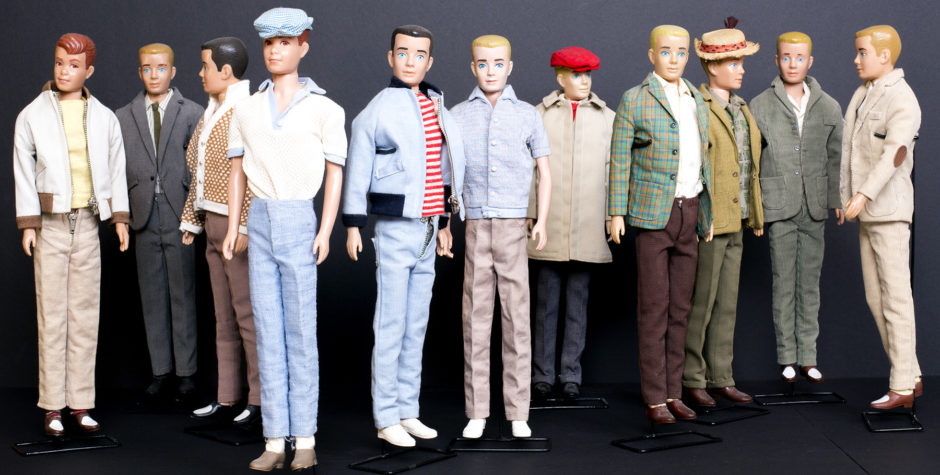Stan Weston, 84, Dies; Sent G.I. Joe Marching Into Childhoods of Millions
By RICHARD SANDOMIRMAY 11, 2017
Stan Weston, whose concept for a military action figure became the heroic G.I. Joe, one of the most popular toys ever produced, died on May 1 at his home in Santa Monica, Calif. He was 84.
His daughter, Cindy Winebaum, said the cause was complications from surgery.
In 1963, Mr. Weston was a successful licensing agent who represented properties and personalities like the television drama “Dr. Kildare,” the comedian Soupy Sales and the Kingston Trio folk music group. When he approached the Hasbro toy company, he believed he might be able to replicate the success of the Barbie doll, the plastic fashionista that was introduced by Mattel in 1959 and was followed two years later by her boyfriend, Ken.
From Elliott Handler, a founder of Mattel, he had learned that a popular product could spawn a big, continuous business, like Barbie’s outfits and accessories.
“Stan, you’ve got to sell them the razor,” Mr. Weston said, recalling Mr. Handler’s advice in the book “Mego 8-Inch Super Heroes: World’s Greatest Toys!” (2007) by Benjamin Holcomb. “Then you can sell them a lot of blades.”
After trolling the Encyclopaedia Britannica for a subject that might yield Barbie-esque success, he alighted on the men of the United States military, who wore many uniforms, wielded numerous weapons and drove various vehicles (read: accessories).
For his pitch to Hasbro, he mounted paraphernalia from military branches and flags on yellow cardboard, according to a 2012 article by his brother, Jay, in The Huffington Post. At a second meeting, Mr. Weston brought mock-up figures of a soldier, a Marine, a pilot and a sailor using small, flexible wooden models that he had purchased in an art supply store
“You will make a fortune with these,” Donald Levine, a Hasbro executive, told Mr. Weston, according to the article.
In a letter to Mr. Levine that confirmed his ideas, Mr. Weston said that a “complete military package” could be developed around “rugged-looking scale dolls for boys complete with military wardrobes to scale, military headgear to scale, military weapons to scale,” and armed service insignia, combat medals, sharpshooting awards and flags of the United States and the world.
As payment, Hasbro offered him $75,000 or a tiny royalty fee that was below the industry norm because he was new to the toy business, his daughter said. Eventually, he asked for $100,000, and Hasbro agreed.
“When he saw the line at the 1964 Toy Fair,” she said, “he knew he had made a mistake.”
Mr. Levine, a Korean War veteran, told NPR that he named the doll after watching the 1945 film “The Story of G.I. Joe,” and that it was his way to honor the armed forces. Manufacturing of the G.I. Joe figures, 12 inches tall, began in 1964, before American involvement in Vietnam had swelled and public faith in the government and the military had begun eroding.
Hasbro advertised G.I. Joe in a commercial with a martial-sounding song with the lyrics, “G.I. Joe, G.I. Joe, fighting man from head to toe, on the land, on the sea, in the air.”
Vincent Santelmo, who has written several books about G.I. Joe, recalled seeing displays of the action figure in a toy store in the Bronx when he was growing up. “My mother wasn’t fond of the war-toy thing, but she let me have them, and after that, my relatives purchased anything that had to do with Joe for me as gifts,” he said in a telephone interview. “Once in a while, an unsuspecting aunt would slip in a Ken. I could just tell by the style of the book that he wasn’t a G.I. Joe, and I put him to the side someplace.”
G.I. Joe was a breakthrough: a boy’s doll, only in battle dress, with a footlocker full of accessories that kept young fans hungry for more. More than 400 million G.I. Joe action figures had been sold in the United States by 2009, according to Toys and American Culture: An Encyclopedia (2010). And hundreds of G.I. Joe characters have been produced by Hasbro.
“It defined the beginning of the action figure category,” said Steve Pasierb, president and chief executive of the Toy Association, the trade group for manufacturers.
But the good times did not last forever. In the late 1970s, Hasbro shelved G.I. Joe, but it revived him as a three-and-three-quarter-inch figure several years later.
GI JOE CREATOR DIES
This entry was posted in Uncategorized. Bookmark the permalink.

